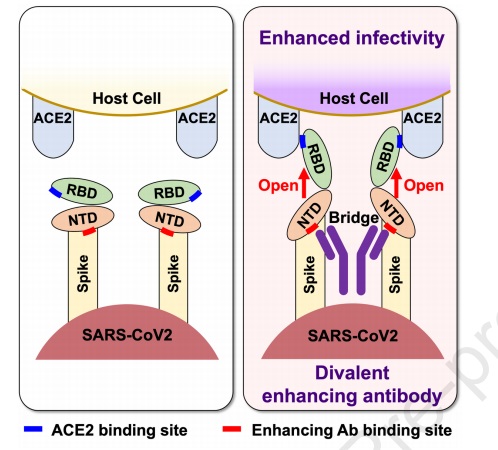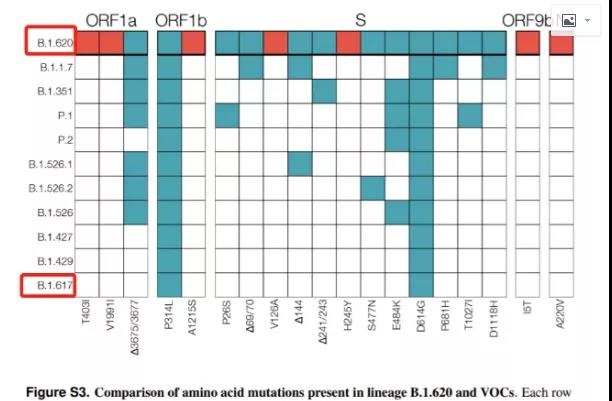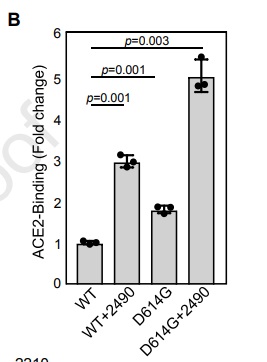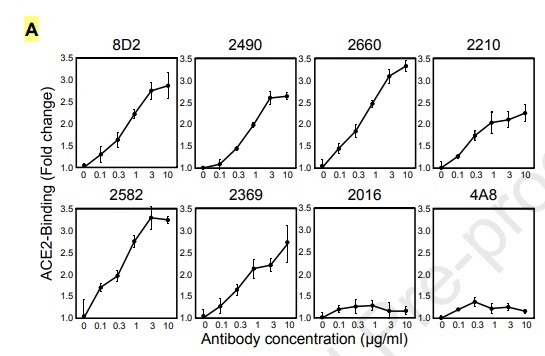Cell: Coronavirus can trigger ADE effect and cause herd immunity failed
- Normal Liver Cells Found to Promote Cancer Metastasis to the Liver
- Nearly 80% Complete Remission: Breakthrough in ADC Anti-Tumor Treatment
- Vaccination Against Common Diseases May Prevent Dementia!
- New Alzheimer’s Disease (AD) Diagnosis and Staging Criteria
- Breakthrough in Alzheimer’s Disease: New Nasal Spray Halts Cognitive Decline by Targeting Toxic Protein
- Can the Tap Water at the Paris Olympics be Drunk Directly?
Cell: Coronavirus can trigger ADE effect and cause herd immunity failed.
Cell: Coronavirus can trigger ADE effect and cause herd immunity failed. On May 24, the CELL Journal published a study on the ADE effect of the new coronavirus from Osaka University, Japan.
It confirmed that there was an antibody-dependent enhancement (ADE) effect after the new coronavirus infection, which made the epidemic early last year. There is a definite answer to this topic that has received much attention and controversy.
As expected, the issue was confirmed
At the beginning of last year, when the COVID-19 began, some researchers pointed out that it is necessary to be alert to the occurrence of ADE in this global pandemic.
There are two reasons:
- first, the Spanish flu is likely to have an ADE effect;
- second, the coronavirus family has an ADE effect There are quite a few viruses: including SARS, which was prevalent at the beginning of this century.
As the ADE effect has not been resolved, the SARS virus vaccine has not yet achieved a breakthrough.
The MERS virus, which is highly lethal, has also been found to have an ADE effect.
 In 2019, the SARS vaccine paper published by Yuan Guoyong’s team, the experimental group of rhesus monkeys developed ADE, and the vaccine experiment failed
In 2019, the SARS vaccine paper published by Yuan Guoyong’s team, the experimental group of rhesus monkeys developed ADE, and the vaccine experiment failed
The full name of ADE is antibody dependent enhancement, literally translated as antibody dependent enhancement, which refers to the enhancement of the infection effect obtained by the virus through the antibody with insufficient effect.
This does not mean that the virus itself is strengthened, but it is equivalent to the antibody that should have resisted the virus.
For some reasons, instead of being a pioneer in fighting the virus, it opened the door for the virus, and even allowed the virus to enter the cell that was previously inaccessible, or so Interfere with and change the working state of immune cells, etc., which leads to aggravation of the infected person’s condition.
This situation is likely to occur in patients who have developed antibodies after being infected with the virus, and then infected with the virus again.
At the beginning of this year, the second wave of infections and deaths that occurred in Manaus, Brazil, was suspected by many researchers as having ADE.
Tests from various parties found that Manaus had already been in the first wave of epidemics that began in the middle of last year. Caused more than 70% of human infections, that is, 70% of people acquired antibodies through natural infections.
However, at the beginning of this year, the second wave of epidemics caused a wave of more severe illness and death in the local area than last year.
In the case of most people carrying antibodies, there were more serious illnesses and more deaths. It is reasonable to suspect that ADE occurred. It is only due to the limited conditions in Latin America and other regions that no decisive evidence has been obtained.
Now, the definitive proof has finally come.
You can’t expext to rely on herd infections for immunity
The Osaka University study basically confirmed that the new coronavirus antibody produced by the human body will “lead the way” to the new coronavirus from the molecular level, and they observed that this function is affected by the antibody concentration.
The higher the antibody concentration, the more ADE. Strong. In addition, they found that when this effect occurs, the ability of the new coronavirus to infect the individual will also increase, which is also affected by the concentration of antibodies.
Different from the ADE effect of dengue virus, the ADE observed in this study does not occur through binding to Fc receptors.
This non-Fc receptor-dependent ADE, although its effectiveness is lower than that of Fc receptor-dependent ADE, is due to It does not have to be expressed through Fc receptors, it can occur more widely.

The schematic diagram of the COVID-19 ADE given in the paper, on the right is the occurrence of ADE, the COVID-19 virus located below is more likely to bind to the host ACE2 and is more infectious to the host
More importantly, because there are more mutated viruses recently, researchers closely followed the development of the virus situation and conducted experiments with mutated viruses containing D614G sites.
The results found that mutated viruses-at least mutated viruses containing D614G sites, also Eat this set, and it is more powerful than the wild type… So, let’s take a look at which mutant strains contain the D614G locus——

Surprised, not surprising, all the mutant viruses listed in the above table contain D614G, whether it is B.1.1.7 (UK mutant), B.1.351 (South Africa mutant) and P.1 (Brazil mutant) ) These three “veteran powers”, or the “famous” B.1.617 (Indian variant), or the recent “dark horse” B.1.620, all contain the D614G mutation site…
This wave of anti-epidemic war is really too difficult, it is simply “the leaks of the house have been raining overnight”…

The picture above shows the comparison data of wild-type (WT) and mutant strains containing D614G, in the presence of ADE on the ability of binding to ACE2.
The two columns on the left are wild-type data, and the right is the data containing the D614G variant. 2490 is the structural subtype of the antibody that can trigger ADE.
The structural subtypes that can also trigger ADE are 8D2, 2210, 2369, 2582 and 2660, they all target the N-Terminal Domain (NTD) of the virus.

As shown in the figure, the structural subtypes of 8D2, 2490, 2660, 2210, 2582, and 2396 increase the level of binding of the new coronavirus to ACE2 as the antibody concentration increases. In contrast, 2016 and 4A8 have no such follow-up ADE response with changes in concentration.
However, in further analysis, the researchers pointed out that in the face of specific different strains, the function and performance of these structural subtypes may be personalized-it may exert immune function, or it may actively combine with the virus, and more Many large-scale clinical studies on different variants will help clarify these details.
In addition, the researchers also found that with the occurrence of this strengthening of the binding of the new coronavirus to ACE2, the activity of the neutralizing antibody decreased, but if the level of the neutralizing antibody is high enough, this phenomenon will be inhibited.
The researchers therefore speculate that the ADE phenomenon is most likely to affect the course of the disease in the early stage of the disease, when the level of neutralizing antibodies is low.
Finally, the researchers made an interesting observation. They found that a small number of healthy people also carry antibodies to the new coronavirus, and the antibodies carried by these healthy people do not all have structural subtypes that can produce ADE, indicating that the antibodies themselves are also personalized of.
In addition, the researchers pointed out that the ratio of the neutralizing antibody in the patient’s body to the antibody that can trigger ADE is also personalized. The neutralizing antibody may be high, or the ADE effect may be obvious. Therefore, the effect of plasma treatment in rehabilitation patients will be very effective. Unstable.
In any case, the idea of relying on natural infection to obtain immunity can be put down. It is even more unreliable to rely on natural infection for most people to obtain herd immunity-not only because the virus will mutate into a second wave and a third wave, ADE will also make the second wave and the third wave more tragic. If you encounter mutant strains and viruses with particularly good specific structures on antibodies, it may cause tragic consequences that are difficult to control.
Will the vaccine cause ADE?
If the antibody carried by the individual does not have the structural subtype that causes ADE, it will not cause ADE. Vaccines do not necessarily produce enhanced antibodies that trigger ADE. At the same time, vaccines can increase the level of neutralizing antibodies. Generally speaking, vaccines are still beneficial for people in epidemic areas and high-risk personnel.

At the same time, the findings of this study also provide ideas for the prevention of secondary infections in the future.
Cell: Coronavirus can trigger ADE effect and cause herd immunity failed.
(source:internet, reference only)
Disclaimer of medicaltrend.org
Important Note: The information provided is for informational purposes only and should not be considered as medical advice.



